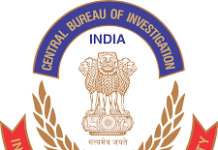
India ended Monday with fewer than 100,000 new Covid-19 cases, the first time it has fallen below this threshold since April 5. As low as this number appears to be — everything is relative — when compared to the early May peaks (yes, it was only a month ago), it is worth remembering that India’s first wave did not see cases exceed 100,000 at its peak. That seemed like a big number back then; now it seems like a small one.
India also reached a significant milestone on Monday, with 46.6 million people fully vaccinated and another 142.8 million receiving only one dose of the vaccine — a significant achievement because it means that at least 20% of the population eligible for vaccines (those over the age of 18) now has some form of protection against Covid-19. The supply of vaccines is expected to increase beginning this month — it is unlikely to meet the government’s overly optimistic projections, but vaccinating 4 million people per day (the likely number this month) is still a significant achievement — and a combination of non-pharmaceutical interventions, Covid-19-safe behaviour, and partial restrictions on movement and activities should help.
The confusion and chaos surrounding India’s vaccine drive, as well as recent scientific revelations, point to the need for some changes in how India obtains vaccines and administers them. Some of these were addressed by the Union government on Monday.
In a speech to the nation, Prime Minister Narendra Modi stated that the Union government will procure vaccines and then distribute them to the states. Most states, including those that wanted to procure vaccines on their own, had expressed a desire for the Union government to take over the task. India is one of the few countries that allows private hospitals to buy vaccine doses directly from manufacturers, and it has decided to keep this policy in place, albeit with a 25 percent limit on the number of doses that can be purchased this way.
In terms of administration, it makes no sense for the country to begin vaccinations for those under the age of 18 until at least 75 percent of the addressable population over that age has been reached. That’s 705 million people, and once they’re all vaccinated, the vaccine campaign can focus on children under the age of 18. If supplies are limited, prioritising who gets the vaccine (and when) and sequencing the drive are critical. If supplies are not a problem, the government should make vaccinations available to everyone.
The campaign must also take into account new scientific findings that both doses of two-dose coronavirus vaccines are required to effectively combat variants of the virus, including the so-called Delta variant, which was first identified in India and is now known to be the cause of the second wave of cases in the country. India should make sure that the time between two doses of Covishield, the Indian version of the AstraZeneca/Oxford vaccine, which is currently being given to the majority of the country’s population, does not exceed 12 weeks.
This means that in 2022, India will have to plan for two, possibly three simultaneous vaccine drives: one for those who require booster shots (roughly every one of the country’s 940 million adults, though not all of them do); two for those who were either not covered by the first drive or chose not to be vaccinated in 2021; and three for those under the age of 18. (even in the most optimistic scenario, India is unlikely to fully vaccinate 705 million before October, which means that even if this phase is launched immediately after, it will continue into 2022).





